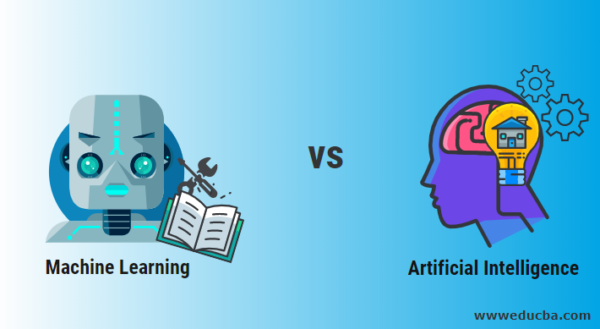Artificial Intelligence and Machine Learning are novel technologies currently creating a lot of buzz in the IT industry. Each day, many people benefit from artificial intelligence applications such as Google Maps, Uber, music recommender systems, amongst others. While the interest in this topic is rising, the ambiguity between the terms artificial intelligence and machine learning is also increasing. One of the most common Google search requests goes as follows: “are artificial intelligence and machine learning the same thing?”.
This misinformation originates from the definition of AI and ML; although both words are extremely intertwined, they are not synonymous. In this article, ULTIMATE TECH ACADEMY presents to you the difference between Machine Learning and Artificial Intelligence.
ARTIFICIAL INTELLIGENCE
Artificial intelligence (AI) and its application is the next big thing in the IT industry. AI refers to a field of computer science dedicated to the creation of intelligent programs and machines performing tasks that usually require human intelligence(Russell & Bohannon 2015)
Artificial Intelligence (AI) systems can mimic human intelligence, adapts to new inputs, and conduct tasks that are human-like.
The core principle of Artificial Intelligence is the ability of machines controlled by AI to think like humans and mimic human actions to achieve the target goal. Simply put, AI is creating a machine that can think and act like human beings. There are three primary goals of AI, which are learning, reasoning, and perception.
However, these goals can be accomplished through learning algorithms which try to mimic how the human brain learns.
READ ALSO FULL LIST OF WINNERS AT 5G WORLD AWARDS CEREMONY
MACHINE LEARNING
Machine learning is a specialty that has evolved from the field of artificial intelligence. Machine Learning as described by Arthur Samuel is a “Field of study that gives computers the ability to learn without being explicitly programmed.
The science of machine learning was birthed as a hypothesis that computers can self-learn specific tasks without having to be programmed, just by using the pattern recognition method. Learning is done in computer and data science-based on examples (data samples) and experience(Shanthamallu et al. 2017).
Since machines are exposed to new data, the iterative element of machine learning is the ability to adapt independently. In order to produce reliable and consistent decisions and outcomes, they should learn from and train themselves with prior computations.
Contrary to popular belief, machine learning does not aim to make computers intelligent or capable of innovation. It is simply a system that enables us to process information more effectively with less personal involvement.
Machine learning algorithms have been in use for much longer than one would imagine, but their improved ability to interpret “big data” by rapidly and repeatedly applying extremely complex and advanced mathematical calculations automatically has recently been developed.
Machine learning runs massive datasets and attempts to identify patterns in the data. In order to effectively implement machine learning algorithms and achieve reliable predictions, enormous quantities of high-quality data are crucial. operates large datasets and tries to find patterns in the information.
Fundamentally, ML algorithms can be divided into three categories: supervised, unsupervised, and reinforcement learning.
DIFFERENCE BETWEEN MACHINE LEARNING AND ARTIFICIAL INTELLIGENCE
The main difference between machine learning and artificial intelligence lies in the scope. ML is a practical approach and an idea of how to work with data effectively, while AI is a concept of what we would like to achieve in terms of the capabilities of the computers.
Artificial intelligence uses machine learning among other technologies, to equip computers with human vision, interpretation possibilities, and creativity. Machine learning and artificial intelligence, both separate and intersecting in some cases, greatly improve numerous fields from medicine and education to art, finance, space exploration, and social wellness.
The key difference between AI and ML are:

REFERENCE
- Samuel, A.L(1959). Some studies in machine learning using the game of checkers.IBM Journal of R&D. 3(3). pp. 210-229.
- Russell, S., and Bohannon, J. (2015). Artificial intelligence, Fears of an AI pioneer. Science Mag. 17 July 2015. pp. 1-2. Available from doi: 10.1126/science.349.6245.252 Accessed on 23 September 2020.
- Shanthamallu, U., Spanias, A., Tepedelenlioglu, C., and Stanley, M.(2017). A brief survey of machine learning methods and their sensor and IoT applications. 8th International Conference on Information, Intelligence, Systems Applications (IISA). pp. 1-8.

Ultimate Tech Academy is the brainchild of Mobolanle Bello, a Computer Science Researcher with expertise in E-Business, Data Mining, Machine Learning, Cloud Computing, Computer Systems, ICT, Research Methodology, Technology Entrepreneurship, Project Management and Blogging


Comments are closed